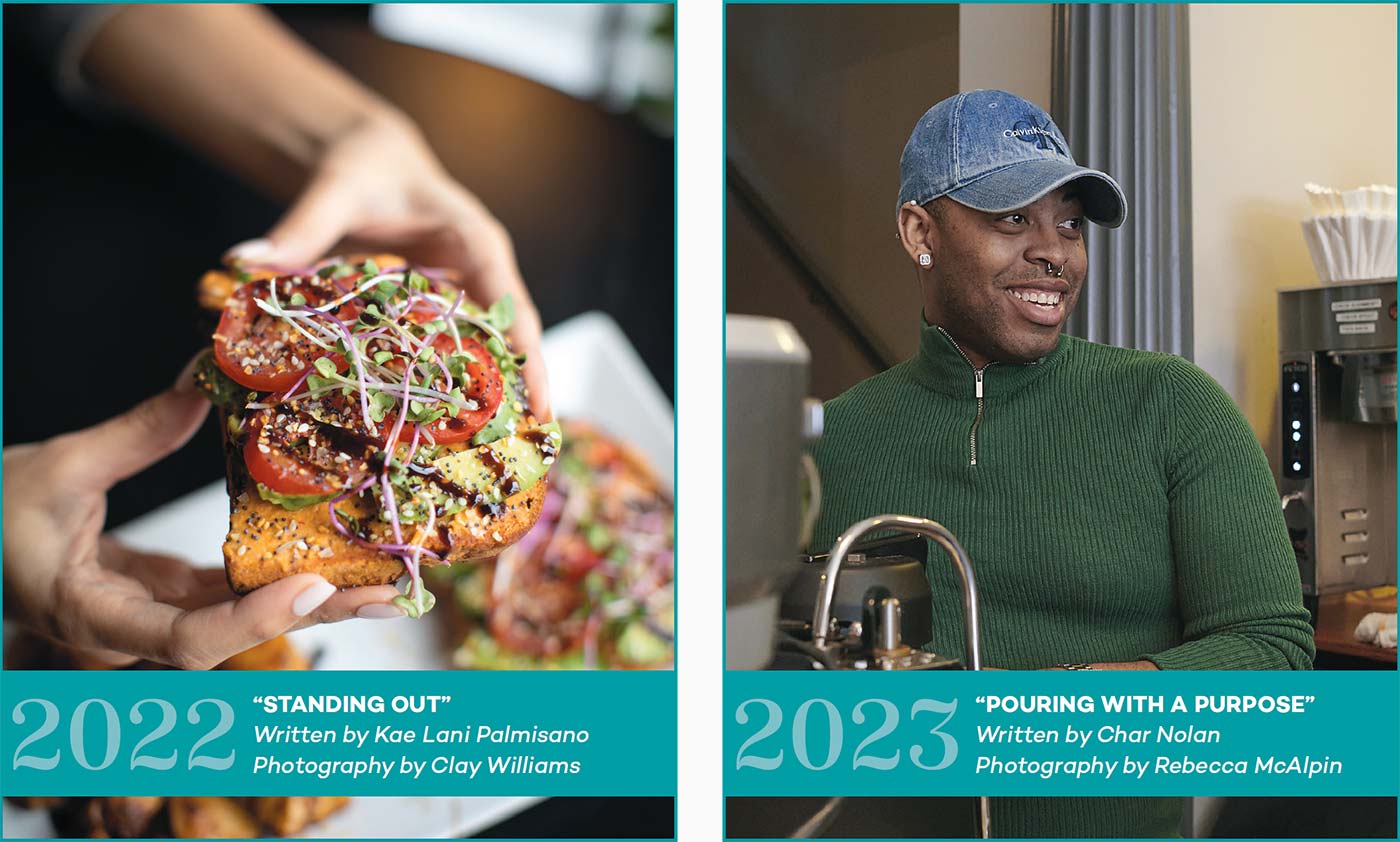10 Lessons from a Decade of Local Food
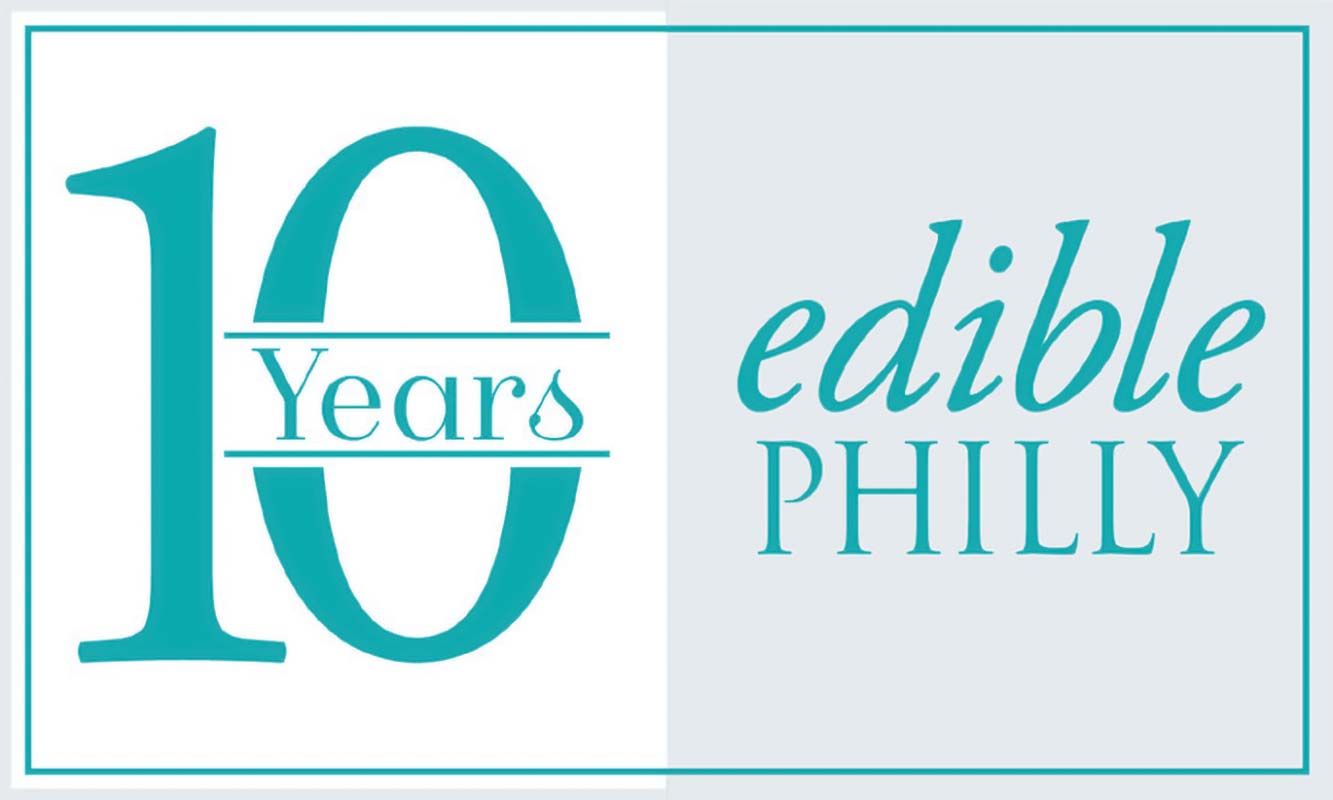
EVEN BEFORE THE FIRST ISSUE of Edible Philly was published at the tail end of 2013, I had been borderline-stalking publisher Nancy Painter for years. We’d met several times. I needed to convince her that the time to launch was now, and that I had to be her editor. Edible Philly’s time had come!
It’s hard to believe that was a decade ago and that Nancy and her husband, Ray, recently sold the magazine to Jen Honovic Herczeg, who has also worked on the magazine all this time. It seems like the right moment to reflect on all we’ve learned and accomplished together during the past decade.
This magazine has covered farming and agriculture from every angle—urban, vertical, and hydroponic. We covered how Green Meadow Farm powers its greenhouses with used frying oil from restaurants and featured programs that connect returning soldiers to farming.
Edible Philly has been the go-to source for yearly farmers’ market guides, neighborhood guides, CSA guides, and more. We’ve covered local wine, beer, cider, and nonalcoholic beverages. We’ve recognized dozens of bright lights in the industry with our annual Local Heroes awards. Our profiles have introduced legends of the food world to readers before they were widely known.
In honor of a decade of local food journalism, here are the 10 most important lessons I’ve learned from 10 years of Edible Philly.

BE A PERMANENT TOURIST IN YOUR HOMETOWN.
In my very first editor’s letter, I wrote that while some people have a passion for travel, I have a passion for home. Philadelphia, specifically our food scene, never stops being the city I most want to explore. “You’ll never become a regular on vacation,” I wrote. This sentiment is truer for me now than ever.
Adam Erace drove this point home in that first issue with his exploration of the then-lesser-known world of South Philly tamales through the eyes of Los Gallos’ Luz Jimenez in his feature “In Search of Tamales.”
Throughout 2014, fine dining was having a moment. The kind of restaurants you would hop on a plane to visit were flourishing here. Peter Serpico’s eponymous restaurant was on the rise. Eli Kulp was taking Fork to an even higher level of prestige.
Edible Philly has always covered these things—the profile I wrote about Serpico for our spring 2014 issue is one of my favorite pieces I’ve ever written—but at the same time, we had our own point of view on restaurants. As a quarterly magazine, we could never focus on the latest news or recent openings; we’ve always focused on the stories behind the people and the ingredients—wherever possible, connecting the dots from kitchen back to farmer.
Later that year, Emily Teel wrote a tour de force of a feature exploring the treatment of restaurant workers a full six years before these issues would become explosive and change the restaurant industry forever. It was the first of many times the issues we wrote about were prescient. Her piece, “People for the Ethical Treatment of Restaurant Workers,” went on to win an Edible Communities Eddy Award.
Finally, Rick Nichols showed us you don’t have to travel to distant lands to find the world’s costliest spice. His unforgettable feature, “Yellow Dutch,” about Pennsylvania’s saffron, was a local food story told by a legend. It was selected for the Best Food Writing Anthology that year.
LOOK TO THE ARTISAN MAKERS FOR THE MOST FASCINATING STORIES IN FOOD.
This year we really hit our stride, telling stories in a way no other local publication was doing. We were refining our approach to local food journalism, which meant taking frequent nerdy detours off the beaten path.
Tenaya Darlington gave us one of the first deep dives on bread genius Alex Bois. Before he opened Lost Bread, he was a baker at High Street. Tenaya introduced him this way: “The first time I ate lunch at High Street on Market, I was so enamored of the bread that I weaseled my way into the kitchen to meet the baker. There, I found a studious, clean-shaven guy in clogs.”
Little did we know Alex Bois would soon become one of the country’s most celebrated evangelists for local and freshly milled grains.
Danya Henninger caught wind of a new piece of equipment that was showing up in kitchens around the city: The Arcobaleno pasta extruder. It allowed chefs like Joe Cicala and Marc Vetri to lead a pasta revolution in this city that marches on to this day.
Also in 2015, Michele Berger profiled Mycopolitan Mushrooms at the beginning, before they were the region’s premier mushroom grower.
Alexandra Jones wrote her first deep dive into local dairy for Edible, a chronicle of how chef Tim Carr came to make some of the most outstanding cultured butter in the region for Oasis Bird-in-Hand cooperative. She provided a science and food history lesson along with compelling long-form storytelling.
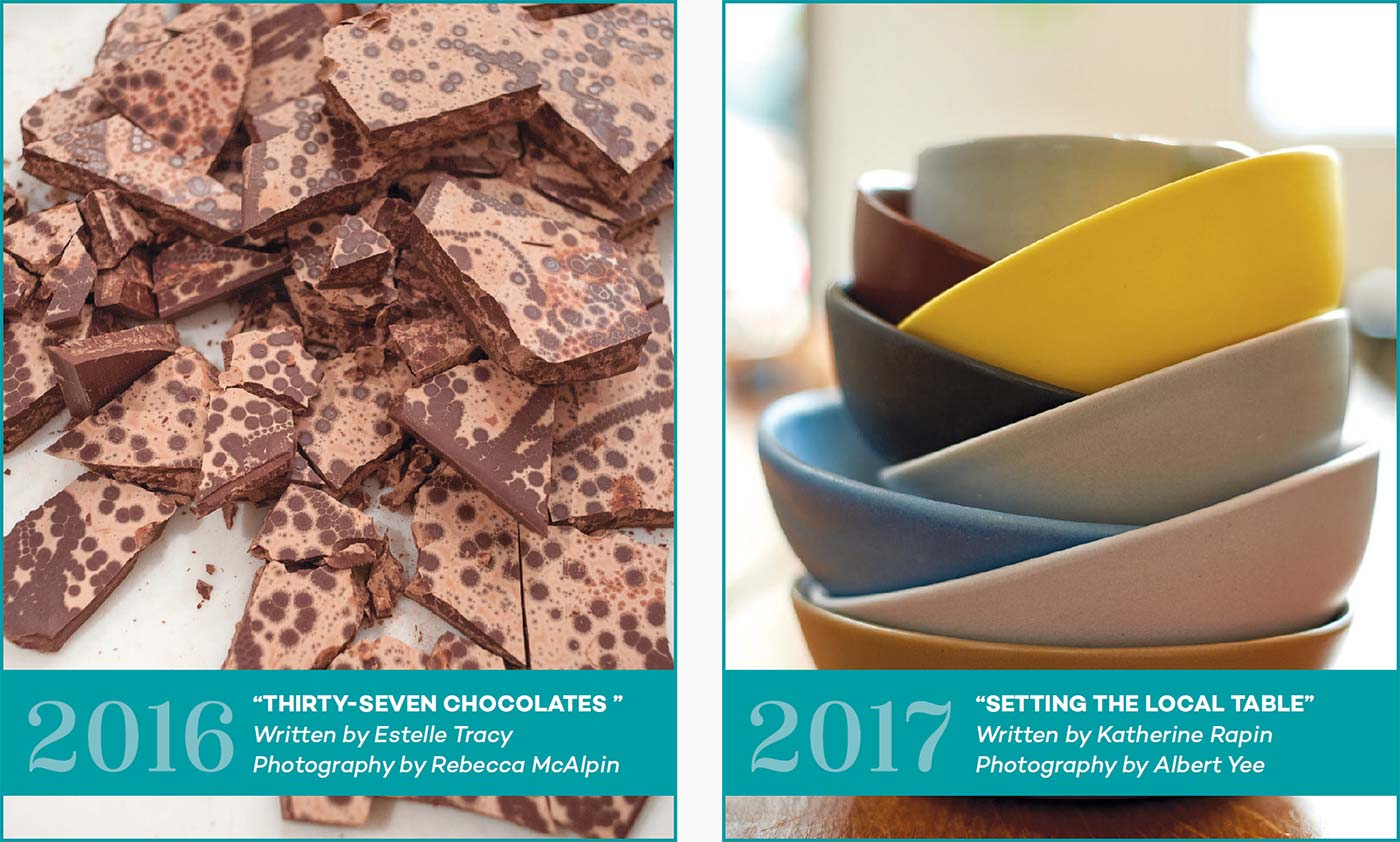
LET WRITERS FOLLOW THEIR PASSIONS FOR A MAGAZINE THAT RESONATES.
By our third year, I’d learned to let go a little bit. We had built a team of awesomely talented and inspired contributors. They often knew more than I did, especially about the specific stories they were dying to tell.
When Estelle Tracey explained how she had challenged herself to taste and study 37 artisan chocolates in honor of her 37th birthday, I knew it would make an ideal Edible Philly feature. It was highly idiosyncratic and personal to Estelle—that’s what made her article “37 Chocolates” so great.
Similarly, Sarah Maiellano wanted to tell us about the food treasures of the Northeast—an often overlooked part of the city that she and I both happen to be from. She wrote us a food tour that could only have come from someone with a native’s love and knowledge of a neighborhood.
FOOD-ADJACENT IDEAS BRING FRESH VOICES AND IDEAS INTO THE CONVERSATION.
Along the way, I learned to think beyond typical “food” stories—the ones about restaurants, shops, ingredients, recipes, chefs, and farmers. We’ve always told those stories, but bringing in ideas that were a bit off-center brought surprises and new perspectives forward.
In 2017 Sarah Grey wanted to talk about her grandmother’s tableware in an essay that, at first glance, might seem more at home in a decor or antiques magazine. “Setting the Table” made the connection between actually eating off heirloom dishes and honoring your ancestors. It inspired many readers to stop saving their precious porcelain for some special occasion that never comes.
We also ran an offbeat but inspired feature by culture writer Sara Davis that looked at the Philadelphia Museum of Art’s permanent collection through the lens of how its most famous works portray food and eating.
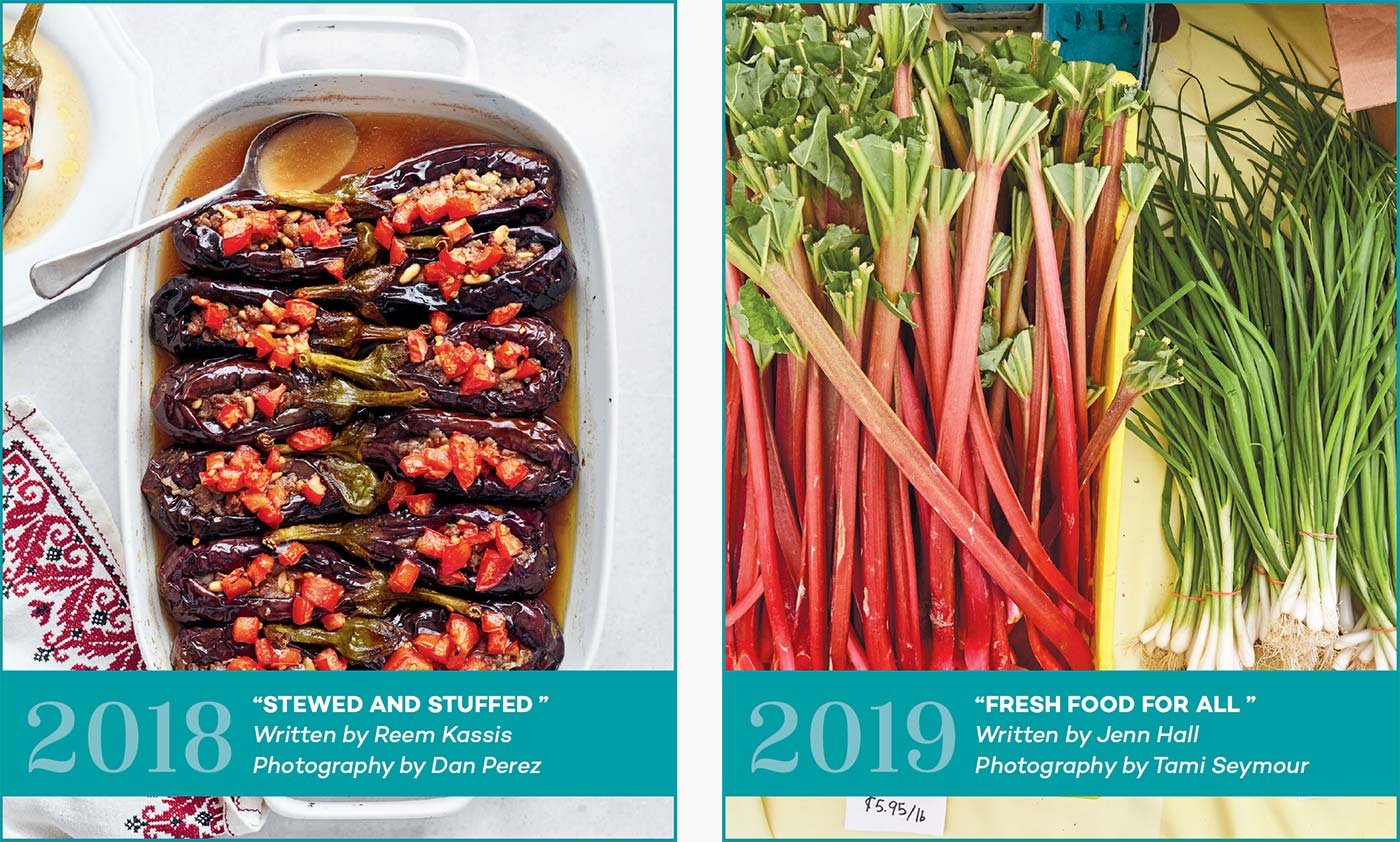
FOLLOW YOUR PASSIONS.
As important as it is to follow the lead of the magazine’s writers and photographers, I remembered in 2018 to pay attention to my own obsessions. That’s how we ended up with themed issues that year dedicated to home cooking, breakfast, and women in food.
Some of my favorite articles from 2018 include “Stewed and Stuffed.” This home-cooking story from celebrated cookbook author Reem Kassis made a case for baking and braising summer vegetables. It was delicious advice that ran contrary to the usual instructions to cook vegetables until just “crisp-tender.” It changed how I look at eggplant, zucchini, and tomatoes at the summer farmers’ markets.
DON’T BE AFRAID TO TACKLE TOUGH AND TIMELY ISSUES.
Even before the racial reckoning that would come in 2020, we had been thinking about the importance of diversity and inclusion in the local food world for a long time. In 2019, we started talking and writing about these issues even more directly.
Though, as a local food magazine, we love farmers’ markets, it was time to take a look at who these markets can sometimes leave out and how to make local produce more available to all. Jenn Hall wrote a feature, “Fresh Food for All: Building a More Inclusive Philly Farmers’ Market,” that sparked essential conversations and helped local markets make progress.
We wanted to include more diverse voices talking about issues surrounding food and identity on our pages. This year saw the publication of “Cuban Sin Carne,” a wonderful essay from writer Jessica Lopez that describes how switching to a plant-based diet threatened to distance her from her family’s food culture and how she reclaimed Cuban food on her own, plant-based terms.
YOU CAN COUNT ON THE FOOD COMMUNITY IN TIMES OF CRISIS.
Starting with the first issue of 2020, my record keeping and memory get spotty. The pandemic descended in the weeks between when we sent the spring issue to the printer and when it was distributed. By the time anyone could read it, the issue felt like a relic from the distant past.
It broke my heart because Kiki Aranita wrote an incredible article for this issue, “Congee: The Ultimate Comfort Food.” It’s well worth reading today if you missed it back then. Because you did.
In the fall issue of 2020, I wrote the following massive under-statement in my editor’s letter:
“The pandemic has affected few sectors as dramatically as the food world. Business models for restaurants, farms, grocery stores, and caterers have all changed. We’ve lost some of the restaurants that have made us who we are. At the same time, the creativity and big-heartedness of the industry is deeply moving.”
As slim as those 2020 issues were, that year we produced another enduring gem: Jill Waldbieser’s tribute to her Pennsylvania Dutch heritage: “Tasting Traditions.”
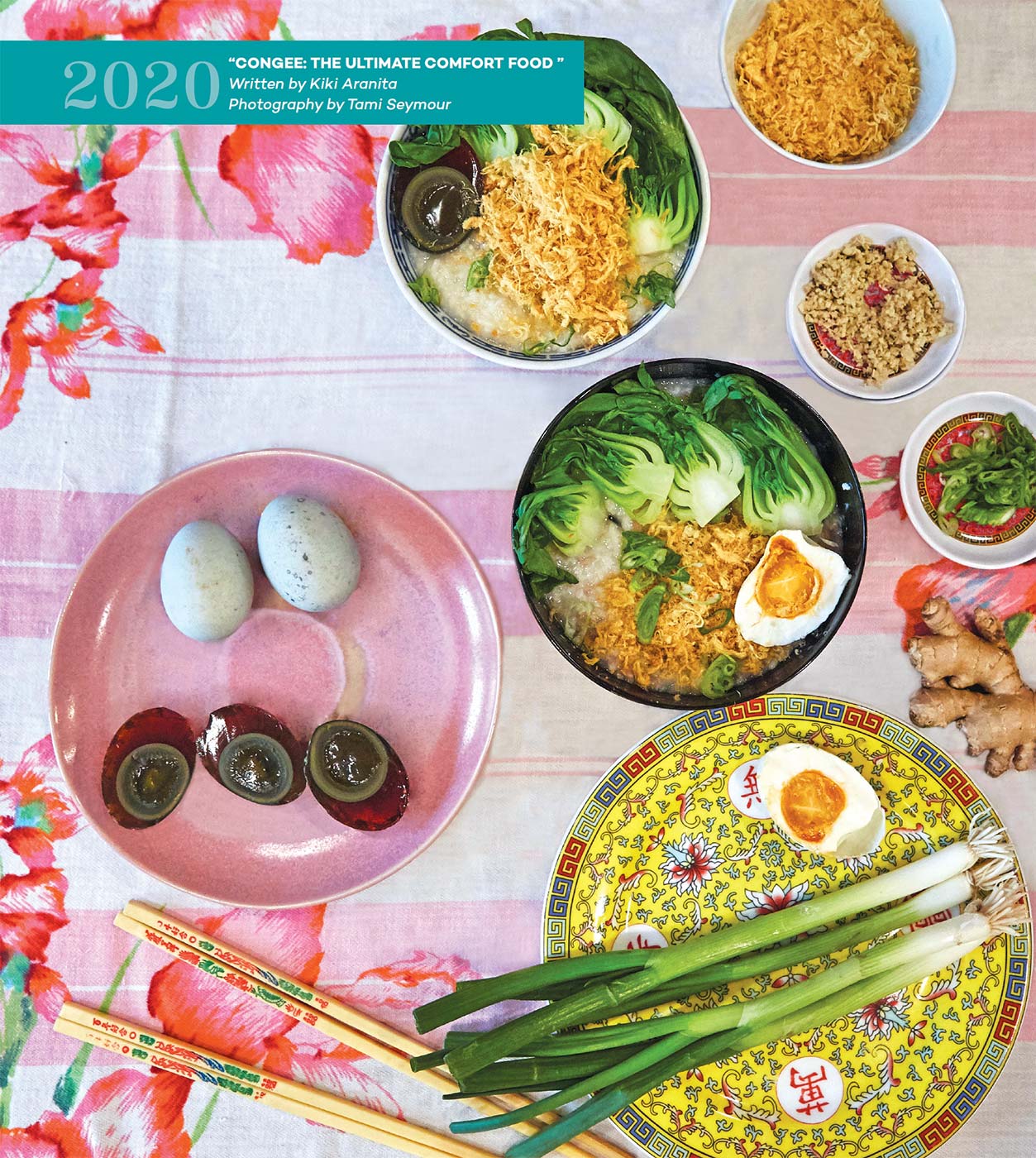
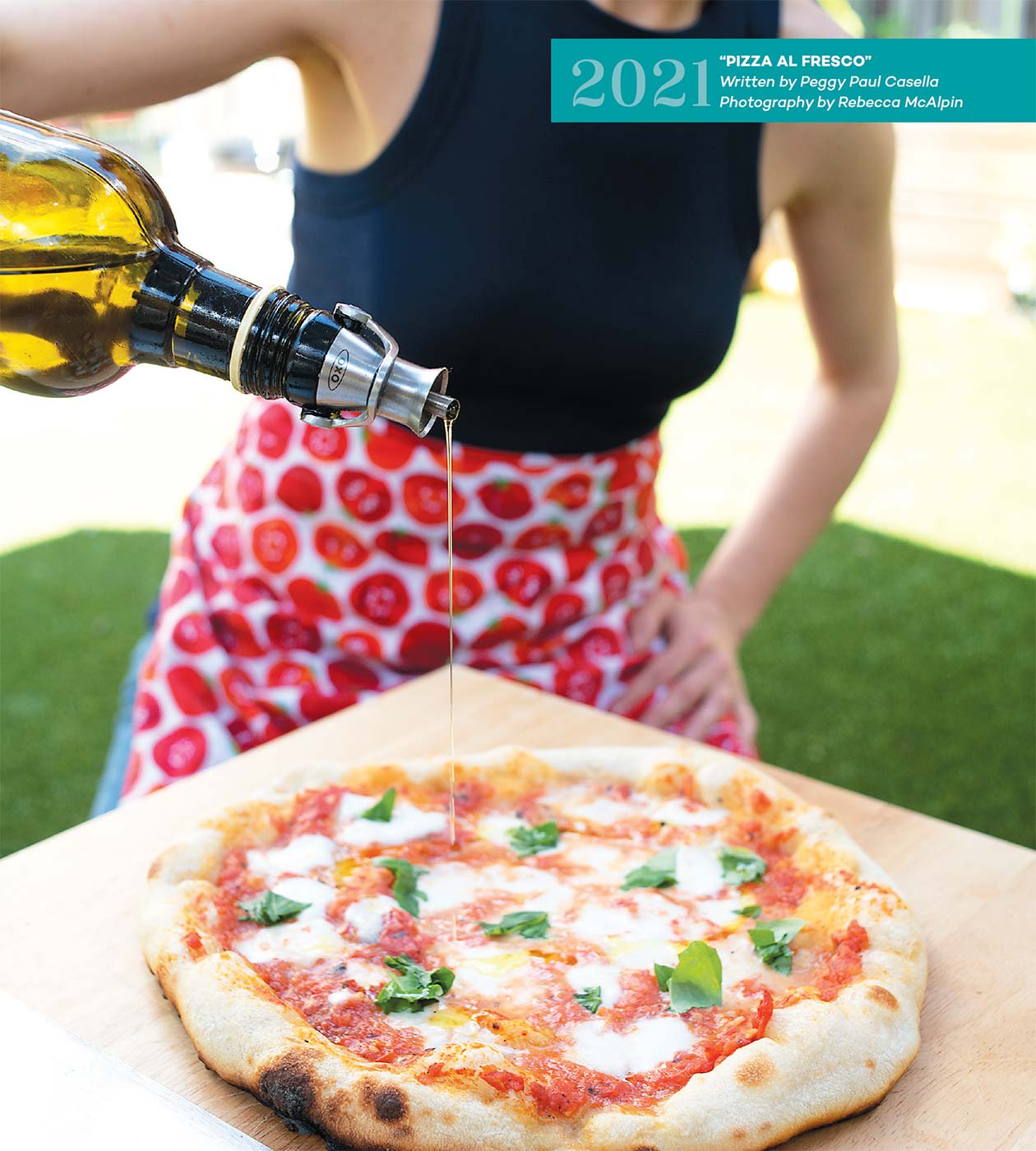
RECOVERY IS A PROCESS.
We started to speak of the pandemic in the past tense. I wrote about innovative pandemic-era projects like Philly Milled from Alex Beninato, who went on to become part of the acclaimed Tulip Pasta bar.
Gradually, we let things take a lighter tone. In the summer, Peggy Paul Cassella wrote a fun story about grilled pizza, “Pizza al Fresco.” Estelle Tracey, now a seasoned chocolate sommelier, wrote an authoritative guide to modern chocolate in Philadelphia, which I still reference. Reagan Stephens wrote an excellent feature, “DM to Order,” about all the pop-up bakeries that made life a little sweeter, including the now-famous Second Daughter Baking Company.
GREAT COLLABORATORS MAKE HARD TRANSITIONS EASIER.
Personally, the pandemic rattled me and left me wanting the security of a full-time corporate job. But I knew my heart would always belong to this magazine. I cried a lot during the production of the spring issue, my last one before setting off on a new professional adventure. It was an exciting time for the magazine, though, as Edible welcomed Vicki Rees-Jones as art director.
The spring issue was very close to my heart, not only because it was my last for a while but also because it focused on my favorite topic: all things plant-based. Kae Lani Palmisano profiled Brennah Lambert, chef and owner of the vegan café LesbiVeggies. Char Nolan covered Mark McKinney’s new spot, Primary Plant Based.
Even when I wasn’t Edible Philly’s editor, I was still a reader. As always, I used the holiday issue’s gift guide as inspiration for my own seasonal shopping.
THE LOCAL FOOD COMMUNITY WILL ALWAYS WELCOME YOU BACK TO THE TABLE.
I picked up the spring/summer issue of Edible at the South Philly Food Co-op. When I sat down to read editor/publisher Nancy Painter’s editor’s letter, I was surprised to see my face in a photo of the team from the magazine’s fifth-anniversary party back in 2018.
When I went on to read that Nancy was passing the torch to Edible Philly’s new owner Jen Honovic Herczeg, who had worked by my side on the magazine from before day one, I was stunned and excited for Edible Philly’s next chapter. I also knew I had to be part of it.
This issue also had some fabulous features, but my favorite was “Pouring with a Purpose” by Char Nolan. She profiled three cafés with missions to serve their communities—it got right to the heart of what Edible Communities magazines have always been about.
